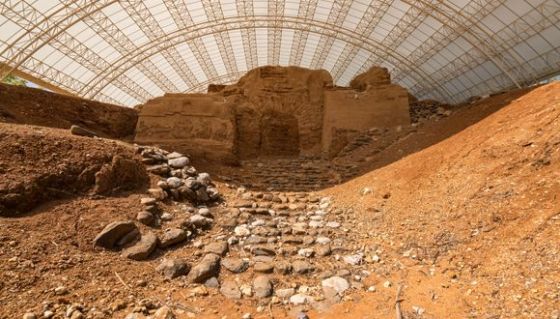Most of today’s Jewish and Arabic-speaking populations share a strong genetic link to the ancient Canaanites, according to a new study conducted by an international team of archaeologists and geneticists, including TAU’s Prof. Israel Finkelstein from the
Department of Archaeology and Ancient Near Eastern Cultures.
The study concludes that modern-day groups in Lebanon, Israel and Jordan share a large part of their ancestry, in most cases more than half, with the people who lived in the Levant during the Bronze Age, more than 3,000 years ago.
The researchers also determined that the Canaanites – who frequently appear in ancient sources, including the Bible – descended from a mixture of an earlier Levantine population and migrants coming from the Caucasus region or modern-day Iran.
Tale of bones
The researchers analyzed genetic material from dozens of skeletons found at Canaanite sites across Israel and neighbouring countries, and compared it to the genomes of other ancient populations as well as to modern-day groups.
“This study suggests there is a deep genetic connection of many Jewish groups today across the Diaspora and many Arab groups to this part of the world thousands of years ago,” said Prof. Reich, a Harvard University geneticist and one of the world’s top experts in the study of ancient DNA, speaking to Haaretz.
Invasion or migration?
Experts know the ancient Canaanites were divided into independent city states, such as Megiddo, Hazor, and Acre. Most of the texts about them come from outsiders or later sources, so did the “Canaanite people” really exist as a coherent entity? The new study shows that genetically at least, the Canaanites did have a lot in common with each other.
Most of the recovered genomes could be modelled as having a roughly 50/50 contribution of ancestry from local Neolithic inhabitants and from a group that hailed from the Caucasus or the Northwestern Zagros mountains, in today’s Iran. For the ancestry of the Canaanites to be split halfway between locals and newcomers there would have had to be an influx of a significant number of people; and a question that begs to be asked is whether this inflow was an invasion or a peaceful migration.
“I don’t think we are dealing with an invasion,” Prof. Finkelstein said. “We have no archaeological evidence of destruction or a major disruption in the Early Bronze Age.”
The next step for researchers will be to continue modelling the ancient populations of the Levant, especially after the time of the Canaanites. According to Prof. Finkelstein: “It will be interesting to see what happened afterwards, what was the genetic profile of the people of biblical Israel and Judah, how do they connect to us and to their predecessors, and what were the other contributions to the genetic pool along the way.”


